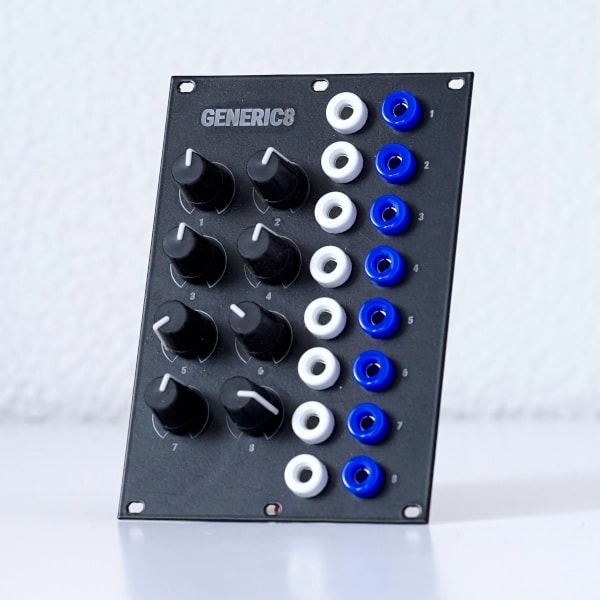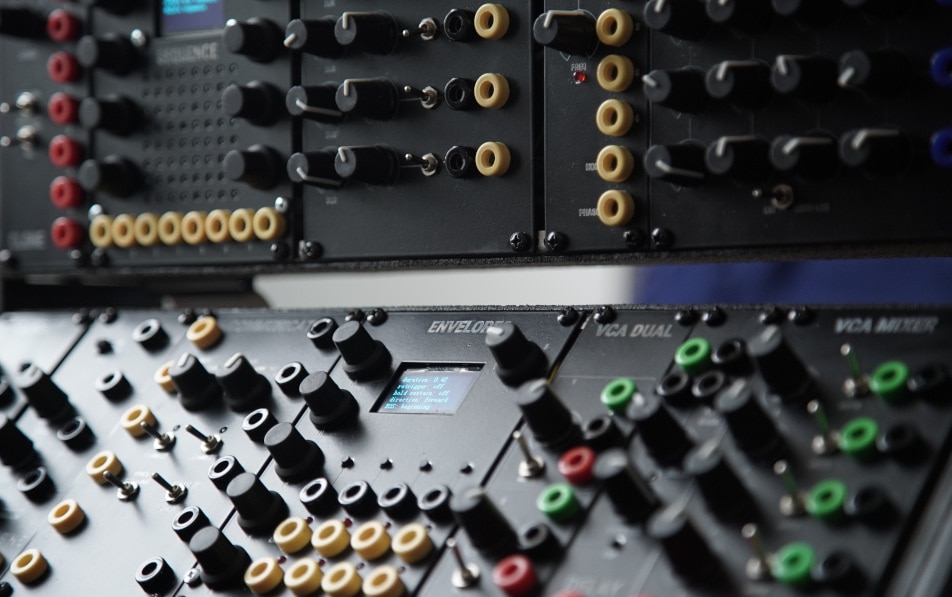Hard patching, meet soft patching: it’s modular, but with a Raspberry Pi and Pure Data inside the system – which means you can mod and make your own modules, too.

This is real hardware – but now that embedded hardware is what a computer was just a few years ago, a single Raspberry Pi can drive an entire system.
The 3dPd module system is now seeking crowdfunding, with preorders on the hardware. The ingredients:
It’s actual hardware. There’s a line of modules, and it’s the usual stuff – oscillators, mixing, filters, effects, control, utility. The physical form factor is Eurorack, but it isn’t intended to be interoperable with other Eurorack modular (though there is an interfacing module you can use).
There are unique modules like Communicate, which supports MIDI, OSC, and raw serial (the last one for Arduino, etc.).

And this clever sequencer:

It’s a single, integrated digital system. One Raspberry Pi and one Pure Data patch run the entire system. The patching you do is via digital signal. But that means that unlike an analog modular system, you can save and morph patches, even recalling patch cord positions. (The modules themselves are essentially controllers, which have three shift registers and one multiplexer each – plus an additional Teensy for those units with a display.)
The tradeoff of this scheme is that you can’t interchange these modules with Pd patches. If you want to do that check out modules with individual RasPi inside like Daisy Patch or Terminal Tedium, as noted by Christof in comments.
Accessories. The project also includes custom cases, and stackable (yes!) patch cords. Those patch cords send digital signal
A Pd sound engine. The whole system runs on a single Pd patch on a single Raspberry Pi, with software made in the free and open source Pure Data visual dataflow environment on Linux.
Interface. There’s also a Teensy microcontroller to interface with the hardware, and that’s running on Pd.
You don’t have to code. You can just look at 3dPdModular as another range of interesting Euro modules, and ignore the fact that it’s effectively hackable.
But you can make your own modules. There are “generic” modules you can program yourself in Pd and Arduino. (Need to find more on this.)

Mobile app with patches. Since there is software inside, you can store patches – and there’s configuration via mobile app.
Wait – record scratch, go back. Because this is actually software inside, the system itself can do things a conventional Eurorack system can’t (but software can). So you get the hands-on control, but software based patch management and morphing. Features, according to the creator:
- Enabling/disabling patching so you can change your patch without interrupting the sound, until your new patch is ready, then cross-fade into the new patch
- Cloning a (set of) module(s) software to create polyphony or other effects without needing to physically acquire a module multiple times
- Multiplying a signal without the need of additional modules, buffered inputs, etc.
- Saving your patch to your phone via our mobile app with the push of a button
- Physical inlets “know” whether incoming CV signals come through a VCA module or not, so their corresponding potentiometers can act either as DC offset or a VCA, never letting you run out of VCAs!
The whole project is the work of Alexandros Drymonitis.
“Early bird” packs with a set of modules and extras will run you 600EUR. BYO Raspberry Pi, but one Raspi is actually all you need as brains. It’s a clever concept – and I expect more of this kind of readily accessible synthesizer in the future.

This should be open, but I don’t yet see anything beyond a placeholder GitHub archive. As it’s a new project, I’ll keep an eye on that. (At least it promises GPLv3 so – who knows, maybe we’ll see a whole ecosystem of Arduino- and Teensy- and Pd-powered modular soon!)
This is all a little pricey for a patching setup for a single RasPi – you’re paying effectively for the customization of the custom patches and patch storage, but you lose some of the freedom to work with analog signal you get on a modular, and you might be better off with just a single, standard Eurorack module that runs Pd patches or allows other custom development. Then again, it’s far more affordable than other analog systems of this size, and with some unique features. There’s nothing else quite like it at the moment.
Crowd funding:
https://gogetfunding.com/3dpdmodular/
Project site: